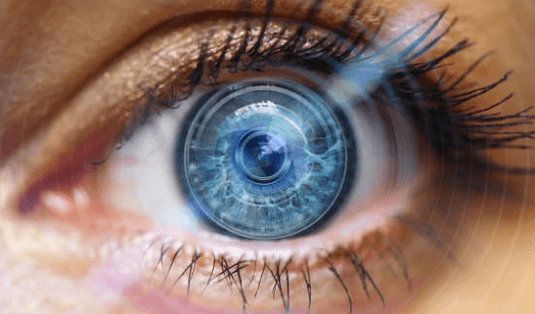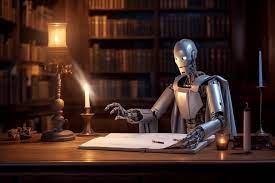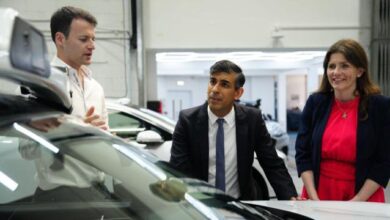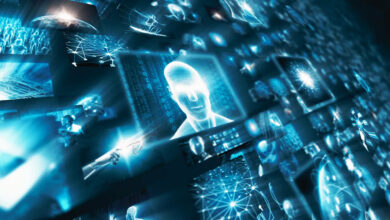
The combination of machine vision and deep learning has emerged as a power couple, revolutionizing the way businesses, people, and myself perceive and interpret visual information. I’m going to take you on a quick trip to understand the relationship between machine vision and deep learning to show how these two technologies can be two peas in a pod. When I’m highlighting their transformative impact on various industries, which are completely my own views made up from my own (linked) sources I’ve read recently, I want you to think and question in your own mind where you have seen these technologies play a role in your life.
I’d love it if you ask yourselves questions such as what new product innovation can you dream up that complements or uses these two technologies, where do you see massive value-add in your professional or personal life by implementing these tools and strategies, or why can you see this being an aspect that is unethical or has its own challenges just as we’re seeing with generative AI. Even better yet, comment and let me know what vital information you think I’ve missed or maybe add to the list of examples where these two technologies can have a romantic dinner for two.
Understanding Machine Vision and Deep Learning
Before we look at how these two technologies can complement each other, it’s important to get context and a top-level understanding of what they both are. I remember seeing my first applications and not having a clue where to start, what definition to use, and how to answer the 50+ questions I instantly had. You should definitely do wider research and reach your own conclusion, but for the context of this article, here’s a quick overview.
Machine Vision
Machine vision encompasses the technologies and techniques that enable machines to perceive and interpret visual information, similar to how humans do. It involves capturing images or videos through cameras, processing the visual data, extracting meaningful insights, or making informed decisions based on the information it’s been fed or had in front of it.
Machine vision systems often employ various algorithms, computer vision techniques, and image processing methods to accomplish the task at hand. Although I put it above I really like to drill in the fact that, unlike deep learning, it’s a physical application camera, much like using your iPhone camera or a more sophisticated Nikon, that captures video, and imagery in a wide range of situations and locations with a massive memory that can be interpreted to the information you are looking for with ease.
Deep Learning in Machine Vision
Deep learning, a subset of machine learning, has played a pivotal role in revolutionizing machine vision. By leveraging deep neural networks, deep learning algorithms can automatically learn hierarchical representations of visual data. These networks are trained on massive amounts of labeled images, allowing them to identify complex patterns, objects, or features in the visual data. Deep learning models excel in tasks such as object detection, image classification, image segmentation, and visual recognition.
The Synergy of Machine Vision and Deep Learning
Machine vision was a truly eye-opening experience for me when I was looking at applications my previous employer, LAC Conveyors & Automation, worked with on their large-scale projects, mostly from what I had access to in logistics. It was one of the areas that led me to learn more about the world of AI, robotics, and accurate analytics which ultimately led to massive value-add for the customer.
However, it took me time to conceptualize how it would be used in other industries or applications aside from logistics. To save you the same amount of time, I’ve put some key ways machine vision interplays with deep learning to create transformational results across product innovation, customer experience, and faster deployment.
Advanced Object Detection and Recognition
Machine vision systems powered by deep learning can accurately detect and recognize objects in images or videos. This has wide-ranging applications, such as automated quality control in manufacturing, object tracking in surveillance systems, and autonomous driving. Deep learning models enable machines to identify and classify objects with remarkable accuracy and speed.
In my personal opinion, this is what I see as making driving on the road a lot safer as you are reducing the opportunities for human error. It’s brilliant because these models will only get smarter, and faster, and have more context for situations to make ever-improving scenarios and a bigger library of databases to ensure the same mistake doesn’t happen again. And that is what can cause a what-would-be life-threatening car crash into you never knowing that situation was a possibility.
Image and Video Analysis
Machine vision combined with deep learning enables businesses to extract rich insights from visual data. This can enable businesses in various industries to deploy effective analytics that will improve costs, increase customer loyalty, and learn from complaints or mistakes much faster with a lower margin for error.
For example, in retail, visual analysis can help understand customer behavior, monitor foot traffic, and analyze product placement effectiveness. In healthcare, machine vision can assist in diagnosing diseases by analyzing medical images, aiding in early detection and treatment. Personally, I think this will become a booming industry, especially as spatial computing will undoubtedly gain a BIG foothold in the world by tracking physical movement with a key one being tracking and analyzing eye movement not before possible.
Robotics and Automation
Machine vision, when combined with deep learning algorithms, plays a critical role and can be a turn-key solution, especially in robotics and automation as I’ve briefly witnessed firsthand. Robots equipped with machine vision capabilities can visually perceive and interact with their environment more intelligently. They can navigate, manipulate objects, and perform complex tasks with enhanced accuracy and efficiency.
For example, machine vision can be added to a robot that might be cross-checking information, such as moving parcels in a warehouse or packing your Friday afternoon bottles of beer for quality control to make sure you haven’t got anything other than a stinking hangover the next day, or maybe to quality control the door going on your soon-to-be brand new car. Leave it up to you to picture how this can create fewer headaches with advanced analytics on these production and quality control procedures.
Augmented Reality (AR) and Virtual Reality (VR)
The integration of machine vision and deep learning has fueled advancements in AR and VR technologies. By understanding and interpreting visual data, these technologies can overlay digital information onto the real world or create immersive virtual environments. This opens up new possibilities in industries like gaming, training simulations, and architecture.
A recent example is VisionPro by Apple. In what I thought was an insane debut product demo/trailer for its new headset, it clearly shows how it’s capturing as much information as possible to relive experiences, create bigger and more immersed viewing, and understand your world in as much detail as possible. I personally can’t wait to zoom out with the Headspace app the next time I’m on a plane two rows down from a crying baby. Whoosaahhh!
Medical Imaging and Diagnosis
One that gets me personally really excited. Mainly because it got a big potential impact on saving lives and extending the lifespan of your loved ones. By analyzing medical images such as X-rays, MRI scans, or histopathological slides, deep-learning models can assist radiologists and pathologists in detecting abnormalities, identifying diseases, and improving diagnostic accuracy.
The Future of Visual Intelligence
The convergence of machine vision and deep learning holds immense potential for the future of visual intelligence. As both technologies continue to advance, we can expect to have a wealth of new features, some of which already exist and are getting built on quickly.
Real-time Video Analysis
Machine vision systems will be able to process video streams in real time, allowing for dynamic analysis and decision-making. This opens up opportunities in areas that include surveillance, traffic management, and sports analytics. Ultimately means you get a better seat at your next football game or less traffic on your way home from work after a long Monday.
Enhanced Human-Machine Interaction
The combination of machine vision and deep learning will enable machines to understand human gestures, expressions, and emotions. Similar to what I was mentioning earlier with Apple making its initial impact in the metaverse, this will revolutionize human-machine interfaces, facilitating natural and intuitive interactions.
Personally, I think the connection between people will be greater than ever. If you won’t admit it, I will, that I love it and get taken back when people know my name when I check in at the hotel, send me promotions that are in line with my values or spending habits, and thank you that have a personal attachment. This is going to take this sort of customer experience to the next level over the next 5-10 years. For businesses, this means you’ll be able to understand your customer as if they are a close friend, family, or however you want to phrase it.
Unstructured Data Integration
Machine vision and deep learning will further enhance the ability to extract insights from unstructured visual data, such as social media images or video content. This will enable businesses to tap into valuable information and gain a deeper understanding of customer preferences and trends.
Cross-Domain Applications
The synergy of machine vision and deep learning will facilitate cross-domain applications, where knowledge and insights from one industry can be leveraged in another. For example, techniques learned from analyzing satellite imagery can be applied to agriculture or urban planning.
For example, if you’re a building developer you can understand the data of what is around the local area to set the price of the housing development you’re building and likely get more accurate data on the target customer thus increasing the speed in which the houses on the new building plot sell for.
What’s Next?
The combination of machine vision and deep learning has unleashed a new era of visual intelligence, enabling businesses to perceive, understand, and interpret visual data with unprecedented accuracy and efficiency. From advanced object detection to medical imaging and augmented reality, the synergistic relationship between these technologies is driving innovation across various industries.
As machine vision and deep learning continue to evolve, we can anticipate a future where visual intelligence plays a central role in shaping businesses, improving decision-making processes, and unlocking new possibilities for human-machine interaction.





